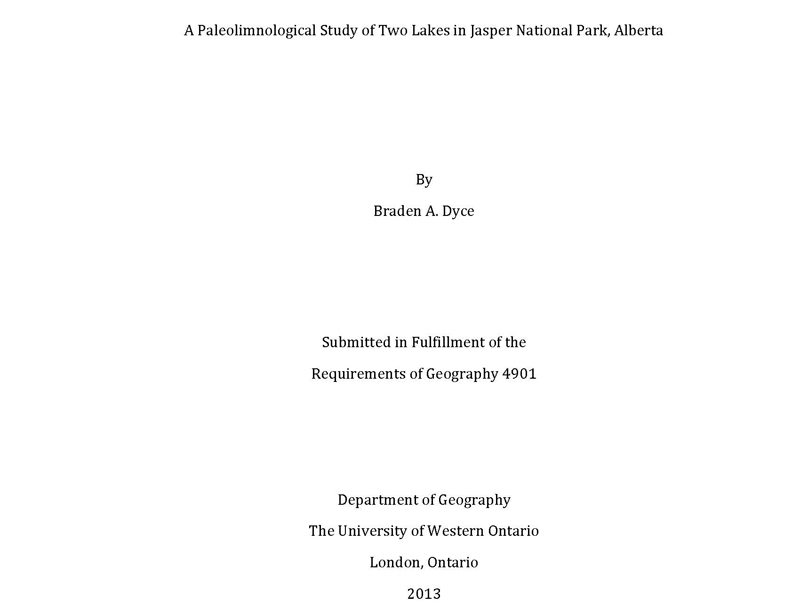Research from Braden A. Dyce, Department of Geography, University of Western Ontario. Associated with the fRI Healthy Landscapes Program.
Abstract:
Two 5-m sediment cores from Little Trefoil Lake, and one 1-m sediment core from Dead Man’s Hole, Jasper, Alberta were retrieved and analyzed to determine diatom productivity based on the weighted percentage biogenic silica. The cores were sub-sampled at 10 cm intervals and were analyzed for biogenic silica, an estimate of siliceous algal production. Samples prepared for diatom analysis were qualitatively evaluated; biogenic silica concentrations in Dead Man’s Hole were low (between 0.8% and 6.8% of the sample weight), and this was supported by low abundances of diatoms and Chrysophyte cysts. Therefore, further analysis of Dead Man’s Hole was not made, including dating. Little Trefoil Lake sediments were characterized by well- preserved diatoms and low to moderate concentrations of biogenic silica (1.7% to 12.8% of the sample weight in core 1 and 3.1% to 11.9% of the sample weight in core 2). Chronology for the Little Trefoil Lake core was determined using ²¹⁰Pb dates and preliminary tephra dates. Results from this research show that biogenic silica is an indicator of changing productivity of diatoms and Chrysophytes in these Jasper Lakes. Although more research is required, initial analyses of the biogenic silica records appear to be linked to warmer temperatures during the medieval warming period.







